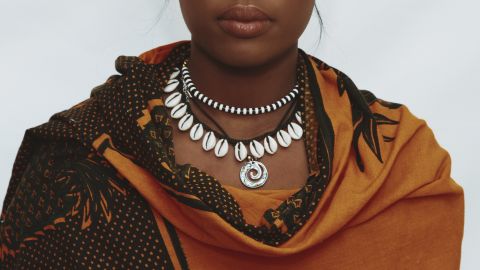For many migrants to Australia, Customs House was a place of transition into life in a new country. Warrane (Circular Quay) was also the point of first contact between the Gadigal and the British. While people from around the world arrived here in search of safety and new opportunities, Warrane’s traditional custodians had their land, their freedom and their lives taken away.
Site of Passage, a new free exhibition at Customs House, brings together 9 contemporary Australian artists who explore their personal journeys. Through video, photography, performance and objects, the artists assert their own connections to place, culture and history to examine what it means to be Australian.
Atong Atem

Atong Atem’s video work Come Home explores her feelings of displacement as a South Sudanese woman who has lived mainly in Australia.
This contemplative work expresses the artist’s unexpected feelings of belonging while visiting Fiji, a place she had no previous connection to.
Cigdem Aydemir

Extremist Activity (Stroll) documents the artist Cigdem Aydemir walking through Sydney with an umbrella placed underneath her niqab while recording people’s reactions. The work responds to the idea of Muslim women as figures to be feared, who could be ‘hiding anything’ under their veils.
As a Muslim, Aydemir points to the absurdity of typecasting entire religious groups, using humour to defuse the stereotypical and sensationalist perceptions of Muslim people.
Anindita Banerjee

In the video work Pyre, Indian-born Anindita Banerjee explores her relationship with the Hindu symbol of the lotus flower. By placing 19,000 matchsticks onto the hand-drawn lotus, the artist embraces a meditative state of reflection.
The burning matchsticks allude to how the artist feels about the erosion of her culture.
Liam Benson

Liam Benson’s photographic series Motherland was created after the death of his mother, to pay homage to the matriarchs in Benson’s family and their Scottish heritage.
Benson represents both masculine and feminine characters of the royal court and incorporates Australian and Scottish iconography to challenge concepts of gender, identity and nationality.
Vonda Keji
In three images of Vonda Keji’s Dichotomy, the artist is dressed in a casual outfit typically worn by women in East Africa. In the other images, she presents herself in casual wear commonly worn in the West. While Keji feels she could wear the Western streetwear in Africa without judgment, she feels there are stereotypes associated with wearing African clothes in Australia.
Keji uses these images to challenge European standards of beauty, address the absence of African women in the Western media and counteract the stereotypes she feels imposed upon her.
Nikki Lam

Nikki Lam’s video Falling Leaf Returns to its Roots 落葉歸根 is a response to Max Dupain’s photograph Sunbaker considered an iconic ‘Australian’ image.
Instead of the archetypal Anglo-Australian male in Dupain’s work, Lam places herself in the picture, introducing colour and movement. This is her response to the myth of a single Australian ideal.
Nicole Monks

Nicole Monks expresses her mixed identity in her wearable artwork Sheemu and accompanying photography series All In One Time.
Sheemu stitches together feathers from an emu and sheep’s wool. These two materials, one from a native animal and the other from an introduced species, represent both Indigenous and Western worldviews. With this object, Monks, who is of Yamatji Wajarri, Dutch and English heritage, investigates the trappings and fluidity of her mixed identity.
Raquel Ormella

Raquel Ormella’s Going back/Volver presents 44 photographs from photo albums of families that have migrated from Chile to Australia. Each photograph is held by the person connected to the original image and the caption documents their movements in and out of Chile.
While making this work, the artist developed relationships with Sydney’s Chilean community. This helped her let go of the desire to travel to Chile to retrace her family’s experience.
Christian Thompson

Christian Thompson’s Dead Tongue expresses the artist’s ongoing resistance to the suppression of Indigenous languages.
With two Union Jack flags held within his closed mouth, the artist references the imposition of English as a tool of colonisation. He also invites us to appreciate the lyrical elegance of the Bidjara language with a contemporary song. In doing so, Thompson keeps Bidjara alive, reminding us of its continued relevance.
Your story
More than half of people living in the City of Sydney area were born overseas. Do you have a personal journey or connection to place you would like to share?
Using your own device, you're invited to share your stories on the online storytelling platform, PlaceStories. You'll also find a computer on level 1 of Customs House, where you can read other people's contributions and follow their journeys.
Site of Passage, curated by Claire Field and Tian Zhang, runs 10 May to 28 October 2018 at Customs House.
Published 27 April 2018, updated 19 June 2018



